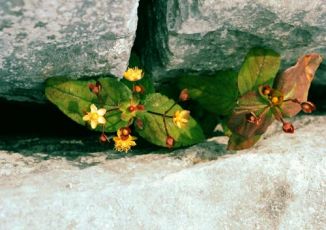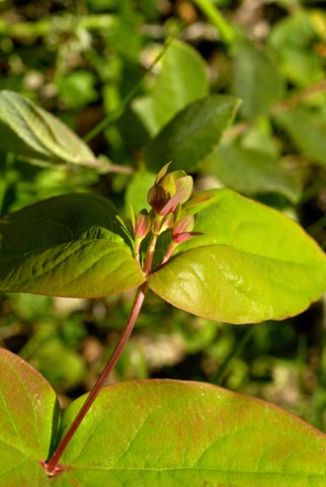Tutsan is a bushy, semi-evergreen undershrub which grows to about 60cm high. It has most attractive yellow flowers (15-25mm across) which are in small, terminal clusters. The flowers have five oval petals and the stamens, which are as long as the petals, are formed into five bundles and resemble pins in a pin-cushion. They bloom from June to August. The five sepals are longer than the petals. Tutsan's leaves are oval, hairless, about 10-15cm long with tiny little translucent dots. The fruit is berry-like, beginning with a reddish colour which becomes purplish-black later in the autumn and is eaten and spread by birds. This widespread plant grows in deciduous wood, thickets and limestone pavements. It is a native plant belonging to the family Hypericaceae.
I first saw this plant in 1978 in Woodstock, Co Wicklow and photographed it in The Burren, Co Clare in 2006.
If you are satisfied you have correctly identified this plant, please submit your sighting to the National Biodiversity Data Centre




